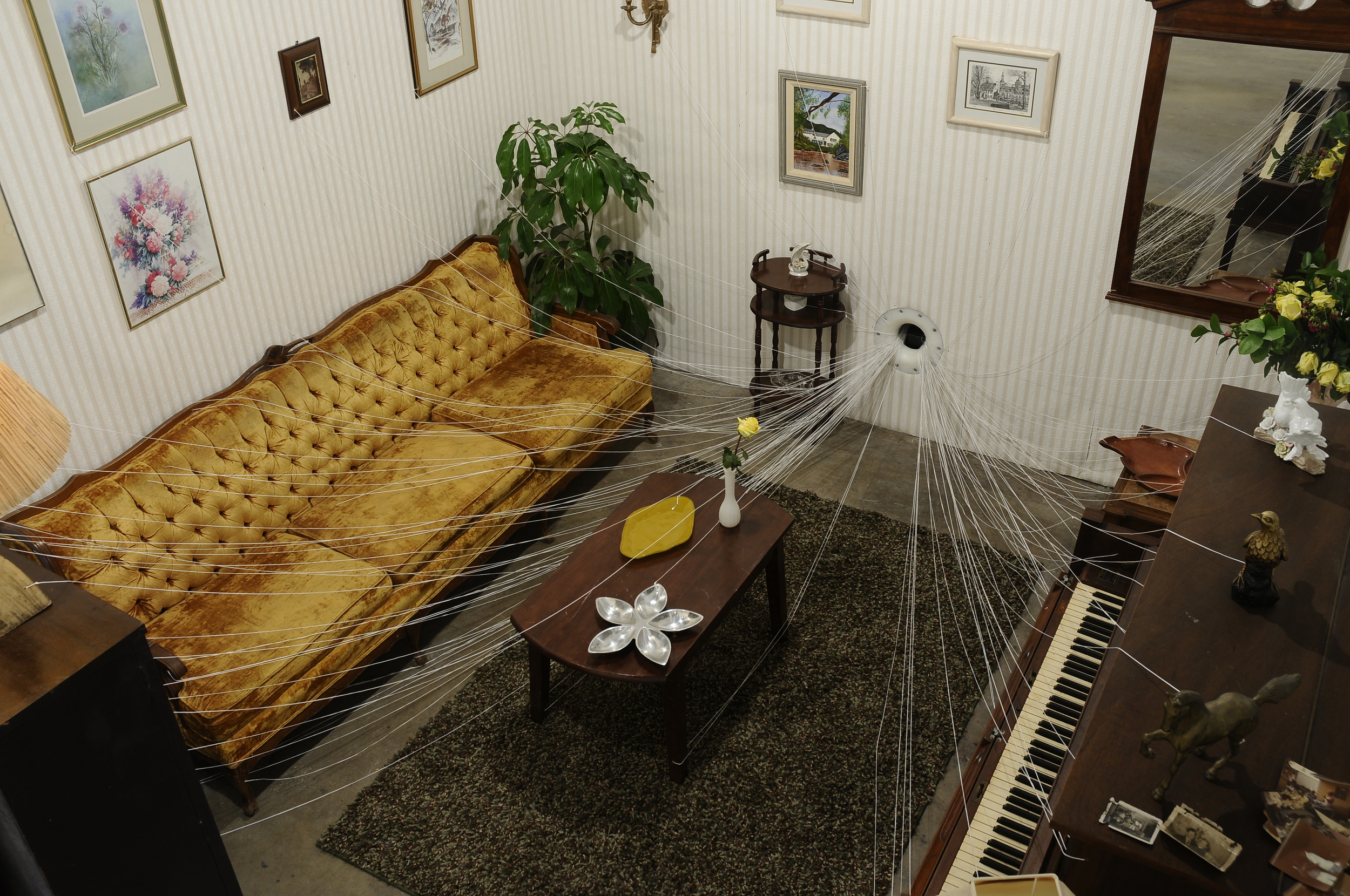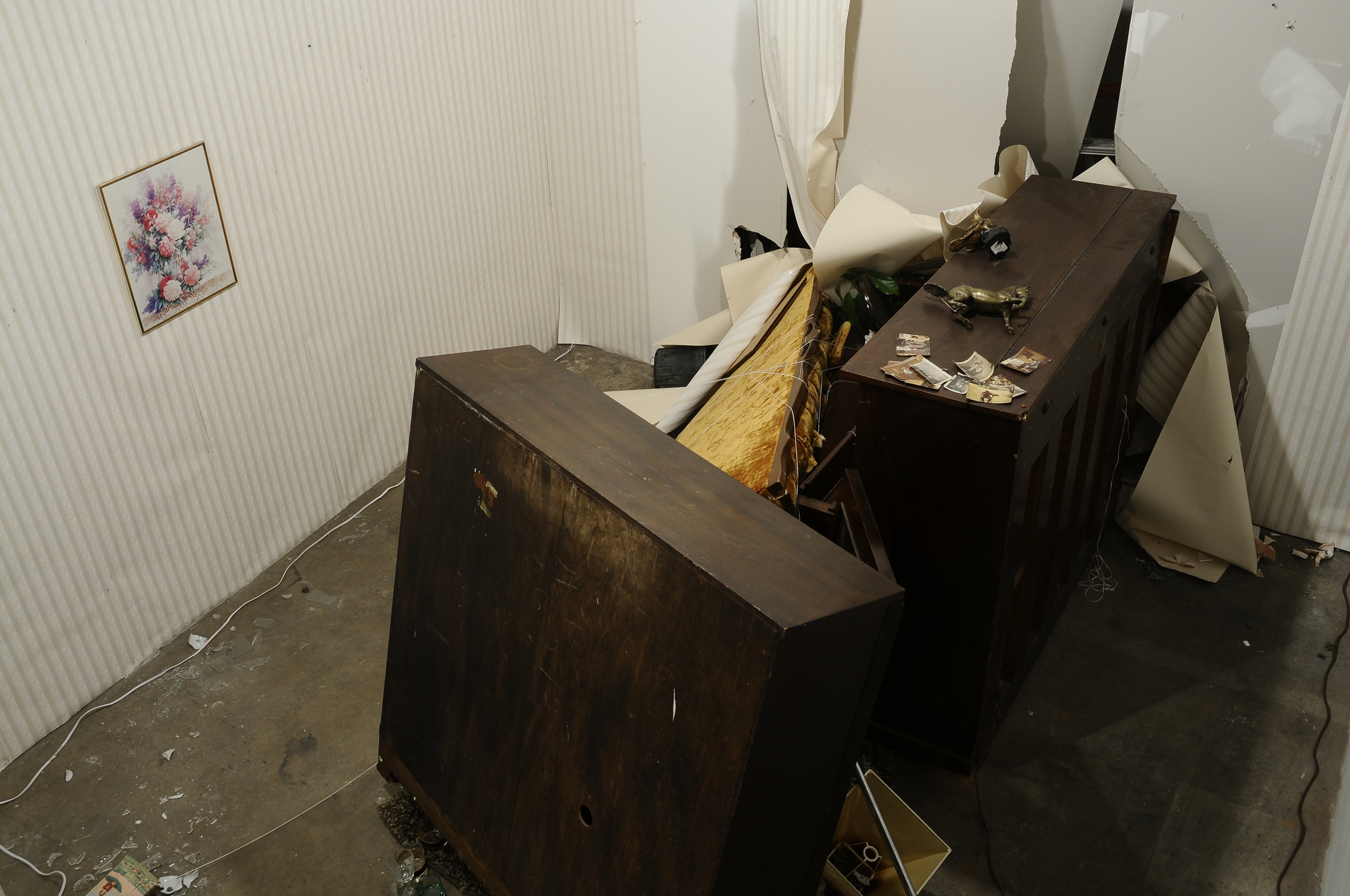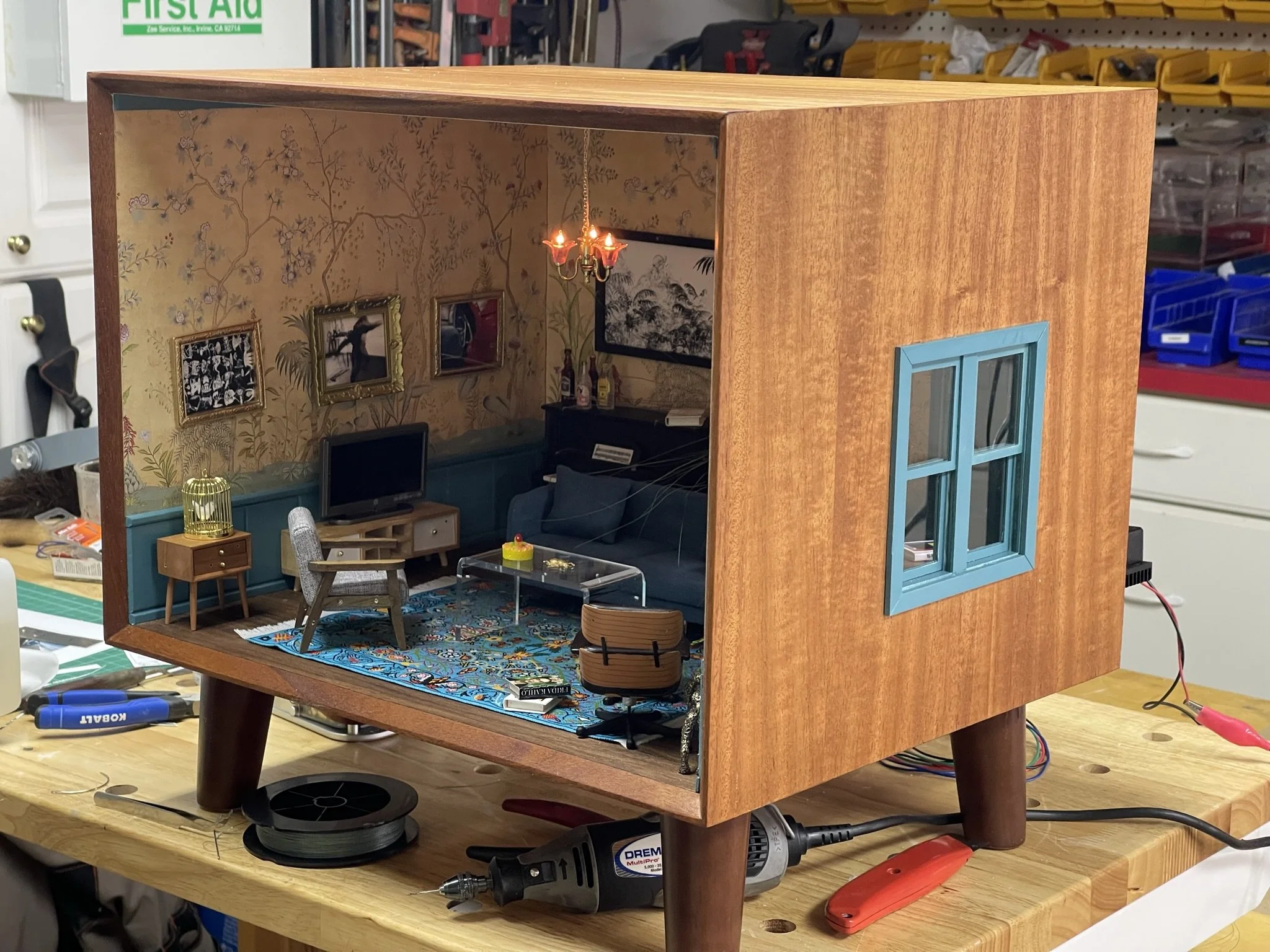SLOW ROOM
A living room is slowly pulled into a hole over the course of a month
We live suspended in the constant now. The past is a story we try to reconstruct, but never fully grasp. The future is imagined, uncertain. We are drawn through time slowly, tethered only by a handful of apparent certainties. One of them: our narrative will come to an end. When, where, how, and what lies beyond remain matters of superstition and speculation.
Art attempts to defy this temporal drift. The artist, by embedding thought in a durable object, seeks a form of immortality. Judged by human standards, this seems grand, translating a lifespan of decades into one of centuries. A painting or sculpture may outlast its maker, its audience, and its culture.
But everything is in motion. Molecules within the artwork vibrate, shift. Temperature, light, chemical reactions, and quantum fluctuations—all quietly alter the object. And outside the object, meaning evolves: what the world sees in a nude, or a bowl of fruit, changes with every new regime.
The museum is a final bid for stasis. Climate-controlled and context-controlled, it extends the lifespan of the artwork and attempts to preserve the meaning within it. The white walls preserve—but also petrify. Just as the grizzly in the Met’s diorama is dead, so too is the Lichtenstein in the MoMA. Ideas, once vital and alive, are embalmed for longevity, trading vitality for permanence.
SLOW ROOM was conceived as a response to this paradox. It exists to live and to die within the museum, to inhabit the system while rejecting its stillness. It embraces motion, entropy, and decay as collaborators. In doing so, it affirms a more profound truth: that to live is to move, to change, to dissolve. That permanence is a myth, and time, our only true medium.




